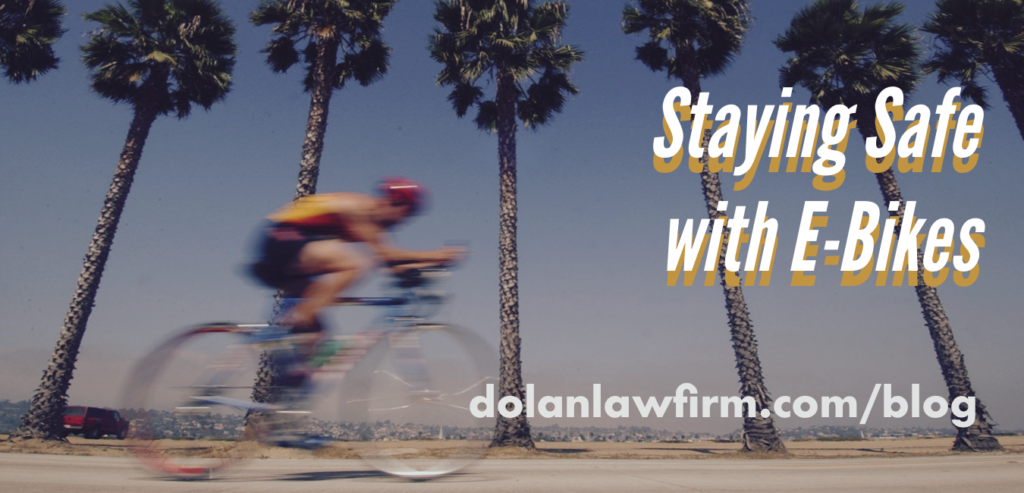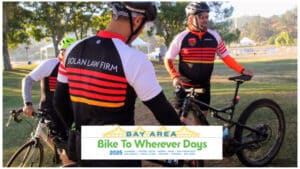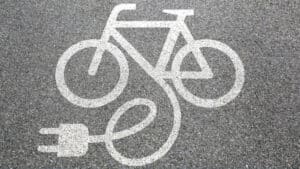Written By: Christopher B. Dolan and Taylor French
At a time when many of us are still stuck at home, socially distanced and trying to stay healthy, we might pick up a new hobby, like hiking, jogging or cycling that allows for escape. While the thought of being outside in the fresh air is certainly appealing, not everyone shares the same desire or ability to endure the physical challenges that come with these types of activities. For those individuals, a new activity has become quite popular: e-biking.
E-bikes, or electric bikes, are road or mountain bikes that come equipped with a battery-powered motor and fully operational pedals. There are three basic categories of e-bikes:
Class 1
- e-bikes are low-speed, pedal-assisted e-bikes, meaning the rider must pedal in order to use the motor. When the rider begins to pedal, the motor kicks in to make the cycling easier. The motor on a Class 1 e-bike provides assistance up to a maximum speed of 20 mph, or miles per hour.
Class 2
- e-bikes also have fully functioning pedals, however they come with a motor controlled by a throttle, which allows the e-bike to be powered without pedaling. Class 2 e-bikes likewise provide motor assistance up to 20 mph.
Class 3
- e-bikes are also pedal-assisted e-bikes, similar to Class 1, but they can reach a maximum of 28 mph. Given the increased maximum speed, Class 3 e-bikes come equipped with a speedometer and require the use of a properly fitted and fastened helmet. Individuals under the age of 16 are allowed to operate Class 1 and Class 2 but not Class 3 e-bikes.
An e-bike rider does not need a driver’s license, registration or a license plate but must abide by all existing traffic laws. Unless prohibited by a local ordinance or regulation, Class 1 and Class 2 e-bikes can be used on any paved surface where a regular bike is allowed to operate. However, Class 3 e-bikes are prohibited on bicycle paths and trails, in bicycle lanes, on equestrian trails and on hiking/recreational trails unless specifically allowed by local authorities.
An e-bike motor offers a user the opportunity to experience the thrill of high-speed cycling without the accompanying physical exhaustion, but it is important for users to understand and appreciate the dangers that present themselves when inexperienced riders become too confident, too quickly. A 2019 study, conducted by researchers at New York University’s School of Medicine and published in the journal Injury Prevention, analyzed a national database of emergency room visits, seeking information about accidents involving standard bicycles, motorized scooters, and e-bikes from 2000 to 2017. The alarming revelation from the study was that e-bike injuries were generally the most severe and likely to require hospitalization compared to standard bicycles and motorized scooters.
Charles DiMaggio, Ph.D., an injury epidemiologist who led this study, presumes that speed likely played a role in the more severe injuries related to e-bikes. E-bikes allow operators to reach significantly higher speeds than most individuals would ever reach on a traditional bicycle. Since riders have likely never traveled as fast as they would on an e-bike, they are likely not prepared for potential dangers associated with such high speeds, which can include the need to brake suddenly for cars, pedestrians or other cyclists. According to Dr. DiMaggio, “We know that increased speed often results in more-severe injuries.”
So what can riders do to stay safe on e-bikes? Of course, e-bikers should obey all applicable traffic laws which are designed to keep those on the road safe. E-bikers should always be vigilant of their surroundings, including weather conditions, road conditions, pedestrians, vehicles on the road and other cyclists. Riders should maintain a safe speed, which means not always reaching the maximum speed allowed by the particular e-bike being used. E-bikers should err on the side of caution and wear helmets, even though that might not be required. They should consider wearing brightly colored clothing, which makes them more visible to others on the road. Riders should use a bell when passing other cyclists or pedestrians to ensure that their presence is known.
Riders should familiarize themselves with their e-bikes before jumping onto the road with full confidence. Users should take their time, perhaps practicing in an empty parking lot before venturing onto a busy road at a high speed. Riders should become familiar with the different pedal-assist settings that many e-bikes have. E-bikes can accelerate rapidly, which can be dangerous for riders not used to sudden momentum changes. Using a lower pedal-assist setting could help users adjust to the e-bike’s increased acceleration. E-bikers should practice braking from high and low speeds, which may also be a new experience for those accustomed to traditional bicycles. And finally, if riders plan to ride where others are present, they should wear a face mask to protect both themselves and those around them.










